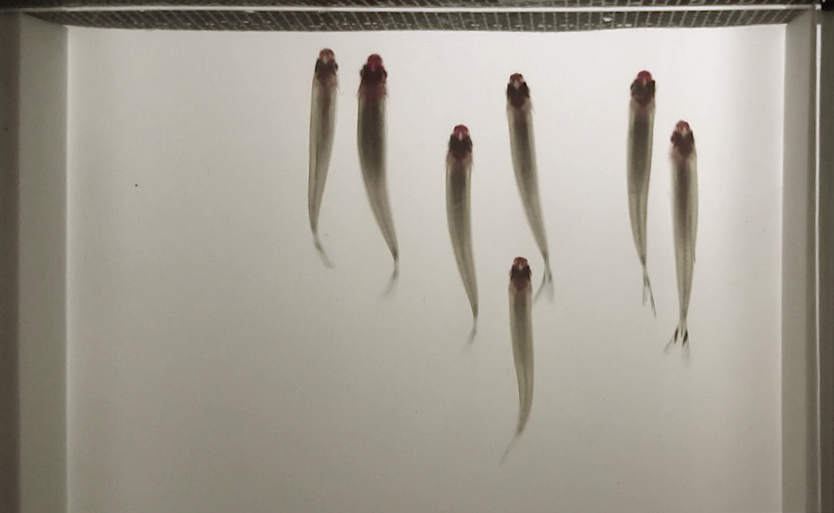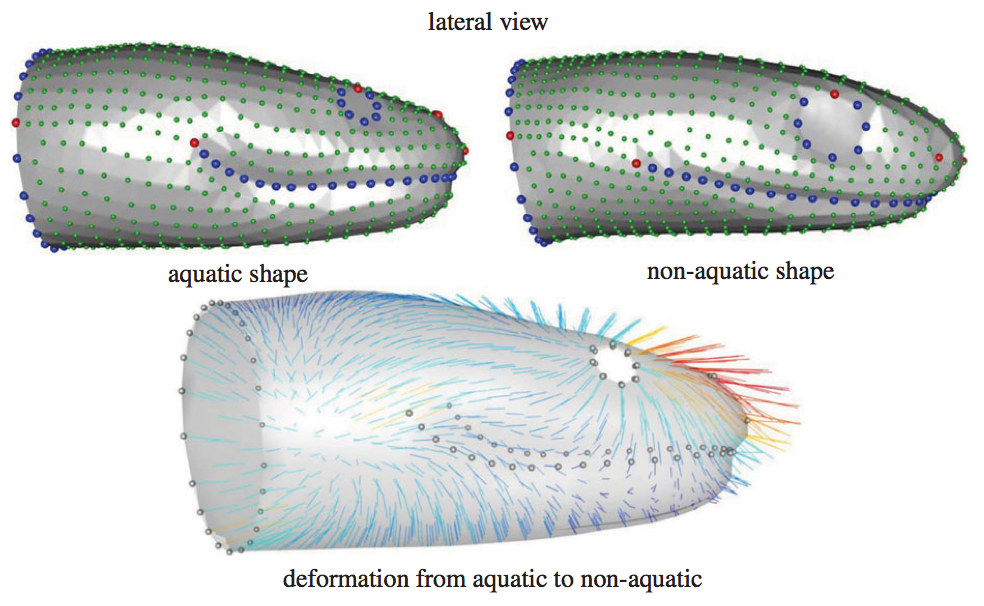 Hydrodynamics of the frontal strike in aquatic snakes: drag, added mass and the consequences for prey capture success
Hydrodynamics of the frontal strike in aquatic snakes: drag, added mass and the consequences for prey capture success
M. Segall, A. Herrel & R. Godoy-Diana
Bioinspiration & Biomimetics 14, 036005 (2019)
[doi:10.1088/1748-3190/ab0316]
bioRxiv preprint: https://doi.org/10.1101/411850
Transient locomotion under water is highly constrained by drag and added mass, yet some aquatic snakes catch their prey using a fast forward acceleration, with the mouth opened. These aquatic snakes show a convergence of their head shape in comparison with closely related species that do not forage under water. As both drag and added mass are related to some extent to the shape of the moving object, we explored how shape impacts the hydrodynamic forces applied to the head of a snake during a prey capture event. We compared two 3D- Continue reading “Hydrodynamics of the frontal strike in aquatic snakes”


